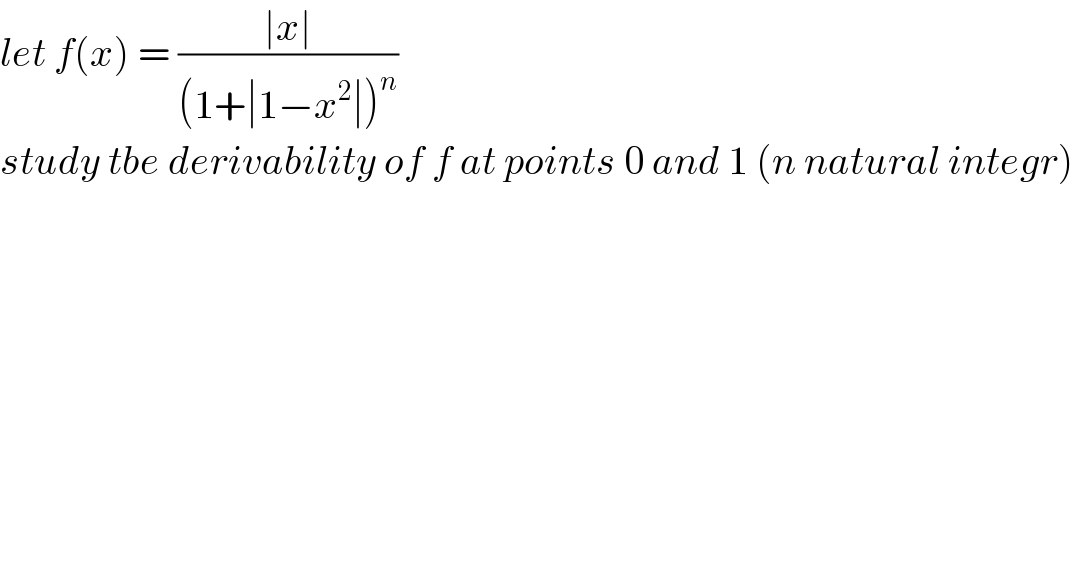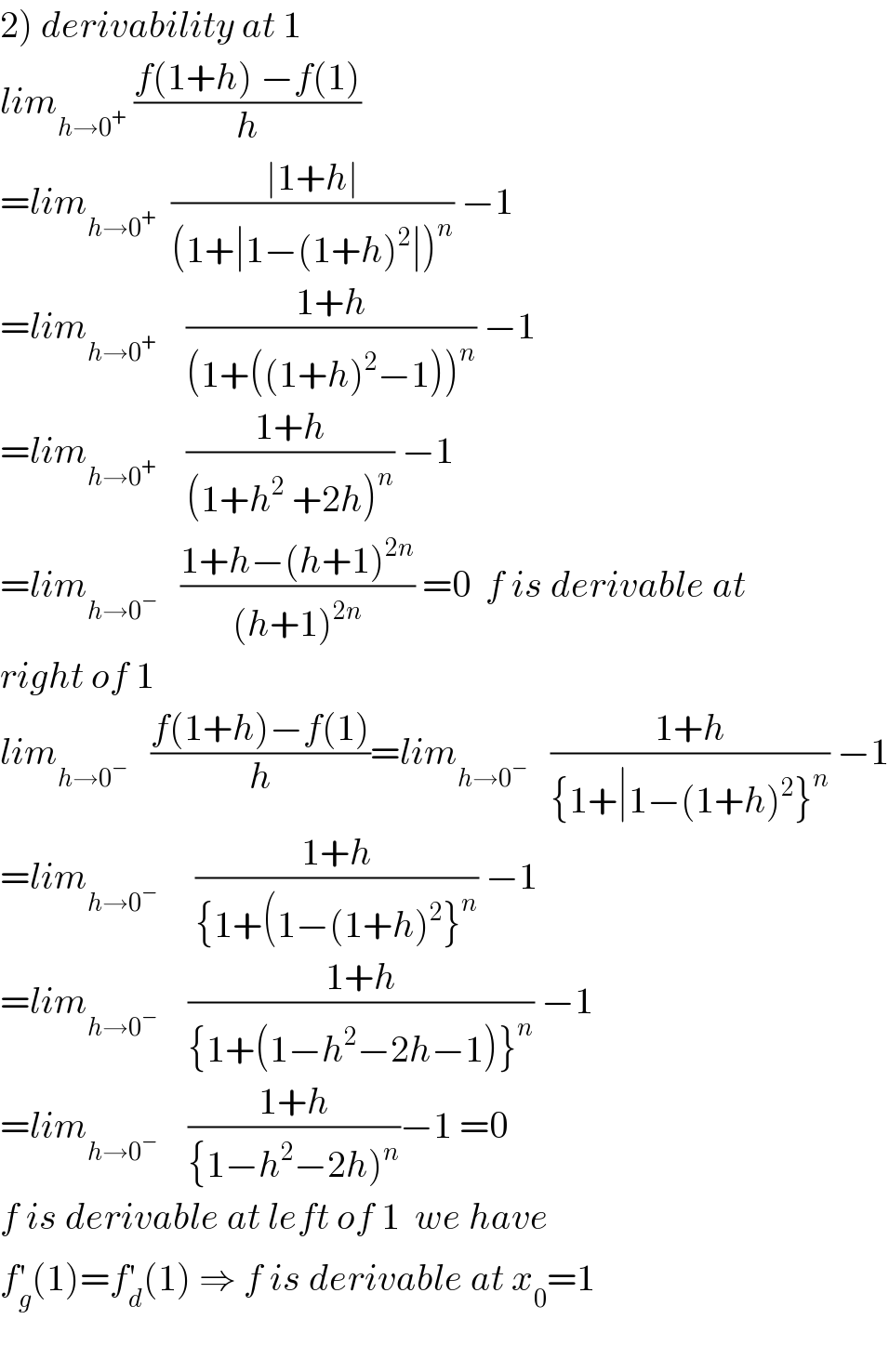
Question and Answers Forum
Previous in Relation and Functions Next in Relation and Functions
Question Number 40102 by maxmathsup by imad last updated on 15/Jul/18

Answered by math khazana by abdo last updated on 26/Jul/18

Answered by math khazana by abdo last updated on 28/Jul/18

